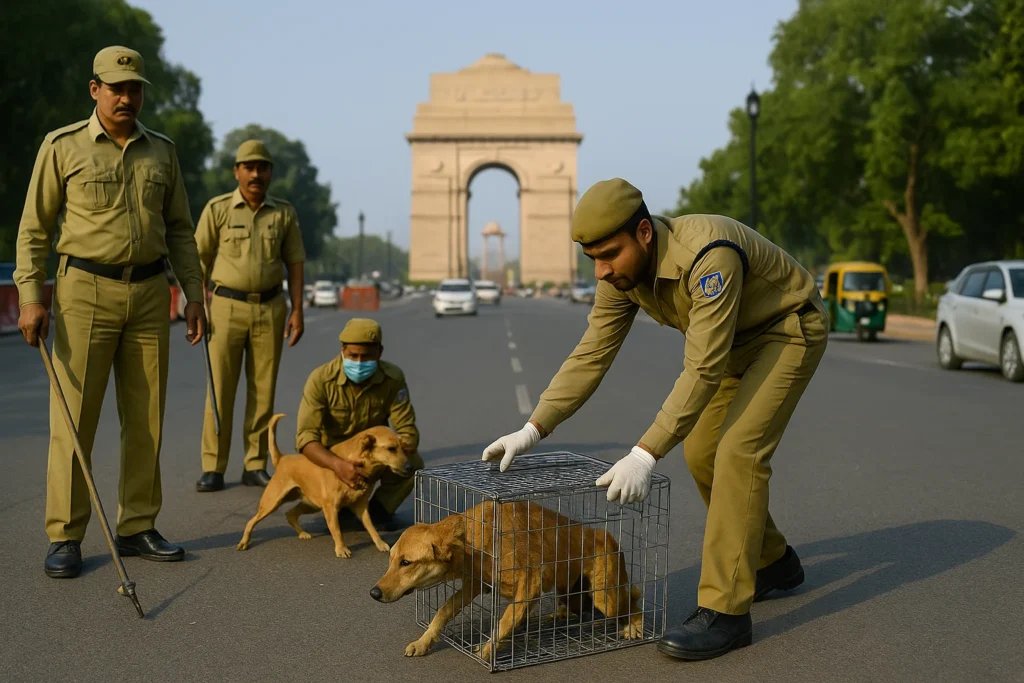Table of Contents

The Supreme Court directs removal of stray dogs from Delhi and NCR in a significant order aimed at addressing public safety concerns. This directive has triggered legal debates, civic discussions, and animal welfare concerns. By placing the focus keyword within the first 100 words, this introduction captures search intent while setting the stage for an informed discussion. LSI terms such as Delhi stray dog control order, NCR public safety directive, and Supreme Court stray dog ruling help broaden keyword reach without overstuffing.
Background of the Supreme Court’s directive
The Court’s decision followed a series of incidents involving stray dogs attacks in Delhi, Noida, Ghaziabad, Gurugram, and Faridabad. Complaints about rising bite cases, rabies threats, and urban sanitation issues prompted legal petitions demanding immediate action. The directive orders municipal bodies to remove stray dogs from public spaces, ensure their relocation to shelters, and report progress within a fixed timeframe.
This order is issued under the Court’s powers to safeguard life and liberty under Article 21 of the Constitution, placing a strong emphasis on public health and safety.
Legal framework and constitutional considerations
The Supreme Court’s authority to issue such directives is grounded in:
- Article 21 (Right to Life) — protecting citizens from threats posed by stray dog attacks.
- Prevention of Cruelty to Animals Act, 1960 — setting humane treatment standards.
- Animal Birth Control (Dogs) Rules, 2001 — outlining sterilization and vaccination protocols.
While the Court prioritized public safety, it maintained that humane relocation is mandatory and euthanasia should only occur in cases of incurable disease or extreme aggression.
Public response and stakeholder perspectives to stray dogs
Support for the directive
Residents in affected neighborhoods have welcomed the move, citing reduced fear while walking in parks, sending children to school, or cycling in early mornings.
Opposition from animal rights advocates
Groups such as PETA India argue that mass removals may lead to overburdened shelters and potential mistreatment, urging sterilization and vaccination instead of wholesale removal.
Municipal concerns about stray dogs
Civic bodies admit they lack adequate shelter capacity, veterinary staff, and transportation infrastructure to implement the order effectively within deadlines.
Comparative perspective: Learning from other states
Kerala’s 2015 large-scale stray dog control program initially reduced bite incidents but faced criticism for cruelty and poor shelter conditions. Over time, a combination of ABC programs, vaccination, and community awareness replaced aggressive removal tactics, proving that long-term solutions require sustained intervention rather than one-off mass actions.
Policy suggestions for effective and humane implementation of stray dogs
- Survey and mapping: Use GIS tools to identify high-density stray zones.
- Strengthen shelters: Partner with NGOs for animal care and space management.
- Public awareness: Educate communities on avoiding stray feeding in public spaces.
- ABC integration: Combine removal with sterilization to prevent repopulation.
- Transparent reporting: Publish weekly progress data for public accountability.
Sources
SupremeCourtIndia, #DelhiStrayDogOrder, #NCRPublicSafety, #UrbanAnimalControl, #AnimalWelfareIndia, #LegalNews, #SCJudgment, #DogControlDelhi, #NCRMunicipalOrder, #StrayDogPolicy


